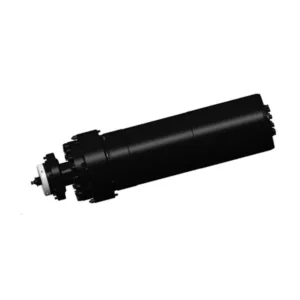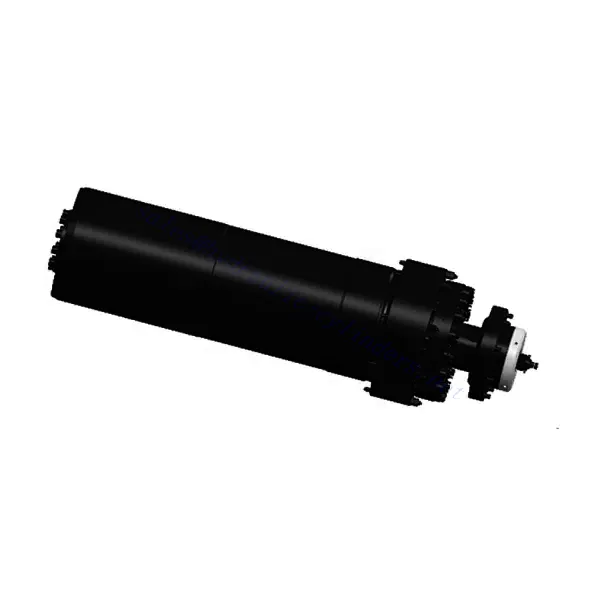Press Master Cylinder
Press Master Cylinder

The press master cylinder is an essential component in hydraulic presses, designed to deliver precise and powerful force for a wide range of industrial applications.
The press master cylinder is a powerhouse component that empowers hydraulic presses with precision and power. With its robust construction, precision force generation, and high power output, it is an indispensable tool for various industrial applications. By following proper usage methods and maintenance practices, you can maximize your hydraulic press operations’ performance, productivity, and longevity. Choose the press master cylinder to unlock the full potential of your hydraulic press and elevate your manufacturing capabilities to new heights.
Press Master Cylinder Key Characteristics:
- 坚固的结构
- The Press Master Cylinder is built with high-quality materials, ensuring durability and long-lasting performance.
- Its robust construction allows it to withstand heavy loads and high-pressure environments, providing reliability in demanding industrial settings.
- Precision Force Generation:
- This cylinder is engineered to deliver precise force with exceptional accuracy, enabling precise control over the pressing process.
- Its advanced design and manufacturing techniques ensure consistent and repeatable force generation, resulting in high-quality and reliable production outcomes.
- High Power Output:
- The Press Master Cylinder is capable of generating substantial force, making it suitable for a wide range of industrial applications.
- Its high power output enables efficient and effective material deformation, assembly, and forming processes, enhancing productivity and reducing cycle times.
Press Master Cylinder Parameter:
| Product Name | Hydraulic Press Master Cylinder |
| Features: | Provide the main thrust for the press |
| Plunger: | 500mm~1800mm Stroke≤4500mm |
| Thrust force: | Maximum 80MN (Plunger 1800mm/pressure31.5MPa) |
| Hydraulic Master Cylinder Applications: | Press |
Press Cylinder Factory:

Usage Method Of Press Master Cylinder:
- Installation and Integration:
- Mount the Press Master Cylinder securely onto the hydraulic press frame, ensuring proper alignment and connection with the hydraulic system.
- Follow the manufacturer’s guidelines and recommendations for installation to ensure optimal performance and safety.
- Hydraulic Connections:
- Connect the Press Master Cylinder to the hydraulic power unit using appropriate hydraulic hoses and fittings.
- Verify that the hydraulic connections are tight and leak-free to ensure efficient fluid transfer and reliable operation.
- Pressure Adjustment:
- Adjust the hydraulic pressure supplied to the Press Master Cylinder according to the specific application requirements.
- Consult the hydraulic press manual or manufacturer’s instructions to determine the recommended pressure range for optimal performance.
- 控制和操作:
- The Press Master Cylinder is typically operated via a control panel or interface, allowing for precise control over force generation and press cycle.
- Familiarize yourself with the control features and functions, such as force adjustment, stroke length, and speed control, to achieve desired results.
How Do Hydraulic Systems Work?
Hydraulic systems work based on the principle of transmitting force through the use of incompressible fluids, typically hydraulic oil. These systems are commonly used in various applications, ranging from heavy machinery and construction equipment to vehicle braking systems and aircraft controls. Here is a simplified explanation of how hydraulic systems work:
- Basic Components:
- Hydraulic Fluid: Typically, hydraulic oil is used due to its ability to resist compression and flow smoothly.
- Pump: The pump is responsible for generating the flow of hydraulic fluid by converting mechanical power, such as an electric motor or an engine, into hydraulic power.
- Reservoir: The reservoir stores the hydraulic fluid and helps dissipate heat generated during operation.
- Valves: Valves control the flow and direction of hydraulic fluid within the system.
- Actuators: Actuators, such as hydraulic cylinders or motors, convert hydraulic pressure into mechanical force or motion.
- Pascal’s Law:
Hydraulic systems operate based on Pascal’s law, which states that pressure is transmitted equally in all directions when pressure is applied to a fluid in a confined space. - Fluid Flow:
- The hydraulic pump draws hydraulic fluid from the reservoir and generates pressure by forcing the fluid into the system.
- The pressurized fluid flows through hydraulic lines or pipes, which are connected to various components within the system.
- Control of Fluid Flow:
- Valves are crucial in controlling the flow and direction of hydraulic fluid.
- Directional control valves determine the fluid flow path, allowing it to be directed to specific actuators or components.
- Pressure control valves regulate the pressure within the system, maintaining it at a desired level.
- Actuator Operation:
- Hydraulic actuators, such as cylinders or motors, receive pressurized hydraulic fluid from the system.
- In a hydraulic cylinder, the pressurized fluid enters one side of the cylinder, pushing a piston and generating linear force or motion.
- In a hydraulic motor, the fluid flow causes the motor’s rotor to rotate, producing rotational force or motion.
- Force and Motion Generation:
- The hydraulic fluid’s pressure, generated by the pump, creates force within the actuators.
- This force is then used to perform work, such as lifting heavy loads, moving machinery, or operating various mechanisms.
- Control and Safety:
- Hydraulic systems often incorporate control systems, including sensors, feedback mechanisms, and electronic controls, to regulate and optimize system performance.
- Safety features such as relief valves or pressure-limiting valves are installed to prevent overpressure and protect the system from damage.
工厂的能力和产能:
(1) 装配
我们拥有一流的自主研发装配平台。液压油缸生产车间拥有 4 条半自动提升油缸装配线和 1 条全自动倾斜油缸装配线,设计年生产能力 100 万支。特种油缸车间配备了各种规格的半自动清洗装配系统,设计年生产能力 20 万只,并配备了知名数控加工设备、加工中心、高精度油缸加工专用设备、机器人焊接机、自动清洗机、油缸自动装配机、自动喷漆生产线等。现有关键设备 300 多台(套)。设备资源的优化配置和高效利用,保证了产品的精度要求,满足了产品的高质量需求。


(2) 机加工
加工车间配备了定制的斜轨车削中心、加工中心、高速珩磨机、焊接机器人及其他相关设备,可加工最大内径 400 毫米、最大长度 6 米的气缸管。

(3) 焊接

(4) 油漆和涂料
配备中小型圆筒自动水性漆喷涂线,实现机器人自动上下料和自动喷涂,设计产能为每班 4000 件;
我们还拥有一条由动力链驱动的大型油缸半自动喷漆生产线,设计产能为每班 60 箱。


(5) 测试
我们拥有一流的检验设施和试验台,确保气缸的性能符合要求。

We are one of the best hydraulic cylinder manufacturers. We can offer comprehensive hydraulic cylinders. We also provide corresponding 农用齿轮箱. We have exported our products to clients worldwide and earned a good reputation because of our superior product quality and after-sales service. We welcome customers at home and abroad to contact us to negotiate business, exchange information, and 与我们合作!
参观我们的 VR 工厂
通过以下方式参观我们的 VR 工厂
叉车液压缸如何工作?
液压缸应用:


